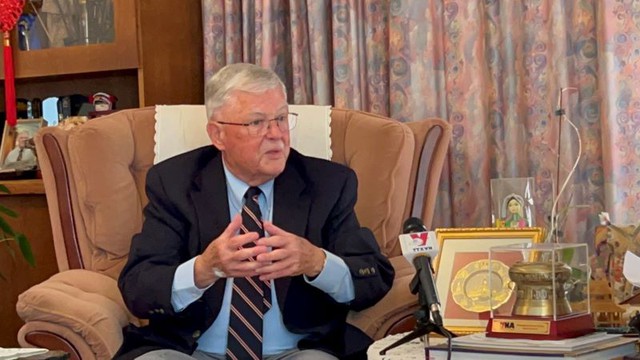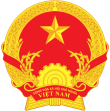Viet Nam's ASEAN Membership: Major contributions
VGP – Australian professor Carlyle Thayer highlights major contributions of Viet Nam since joining the Association of Southeast Asian Nations (ASEAN) on July 28, 1995.

Australian professor Carlyle Thayer
First, Viet Nam promoted the admission of Cambodia, Laos and Myanmar (CLM), thus meeting the original ASEAN goal of including all countries in Southeast Asia. Viet Nam became a firm advocate of narrowing the development gap between the new CLM + Viet Nam members and ASEAN's original members.
Second, when Viet Nam assumed the role of ASEAN Chair for the first time at the Sixth ASEAN Summit in 1998 it secured the endorsement of a six-year Ha Noi Plan of Action to implement ASEAN Vision 2020.
Third, when Viet Nam served as ASEAN Chair for the second time in 2010, it successfully expanded membership on the East Asia Summit to include the United States and Russian Federation and hosted the first meeting of the ASEAN Defence Ministers' Meeting Plus.
Fourth, as ASEAN Chair for the third time in 2020, Viet Nam made an outstanding contribution to ASEAN's development during the COVID-19 pandemic. Viet Nam pioneered virtual meetings of ASEAN officials and Viet Nam was proactive in lobbying the major powers for access to COVID vaccines.
Benefits as ASEAN Member States
Upon joining ASEAN, Viet Nam became a member of the ASEAN Free Trade Area and the country gained considerable experience in multilateral economic cooperation as ASEAN negotiated free trade agreements with Australia-New Zealand, China, India, Japan, South Korea, and Hong Kong, said professor Carlyle Thayer.
Viet Nam also participated in ASEAN's three-pillar community-building program – Economic Community, Political-Security Community and Socio-Cultural Community. In sum, Viet Nam learned and adopted best practices in multilateral economic cooperation.
Given the increasingly complex regional and global geopolitics, Viet Nam has to play a more proactive role to safeguard multilateralism and a rules-based global trading system as a member of ASEAN.
He suggested Viet Nam should give greater attention to reducing barriers to trade, creating resilient supply chains and developing new markets with members of the Regional Comprehensive Economic Partnership and the Comprehensive and Progressive Trans-Pacific Partnership. In other words, Viet Nam must promote "extended multilateralism."
Collectively, ASEAN needs to strengthen its commitment to the ASEAN Outlook on the Indo-Pacific by enhancing its comprehensive strategic partnerships with Australia, China, India, Japan, South Korea and the United States.
ASEAN needs to convince each of its partners that they have more to gain by working with ASEAN rather than acting unilaterally. Three areas should be given priority attention: creating a stable tariff regime, reviving the East Asia Summit as a leaders' led forum, and negotiating an effective Code of Conduct in the South China Sea.
Viet Nam can contribute by leveraging all of its thirty-five comprehensive, strategic and comprehensive strategic partnerships to support ASEAN centrality and the ASEAN Outlook on the Indo-Pacific, said Carlyle Thayer./.
